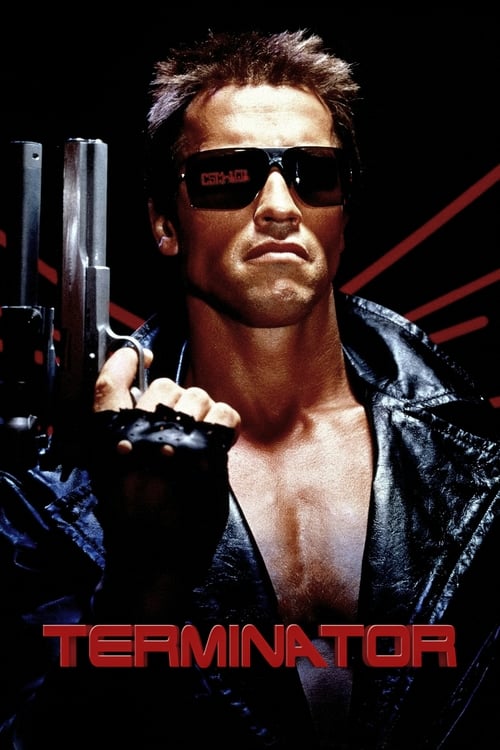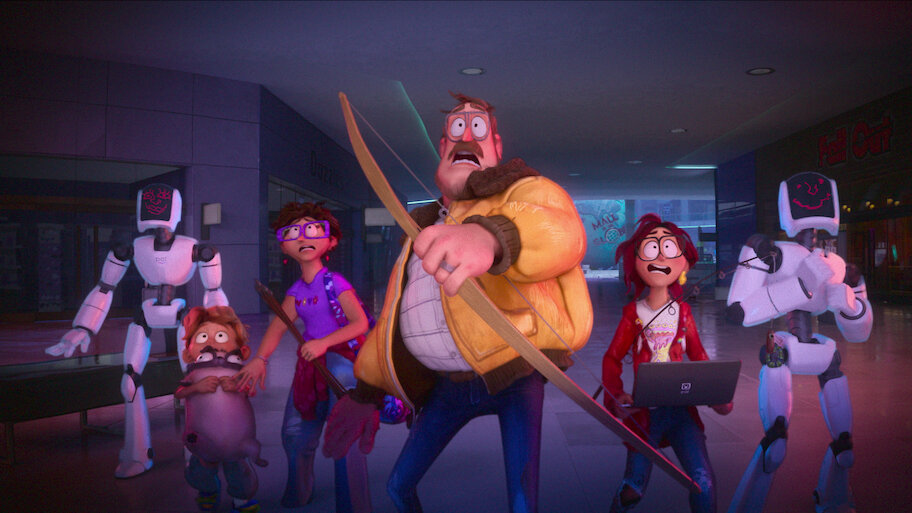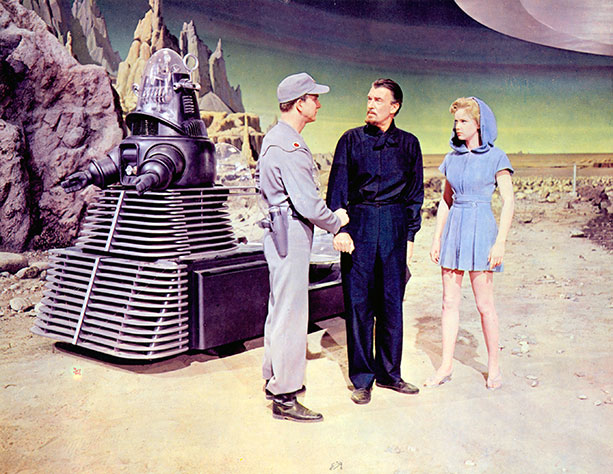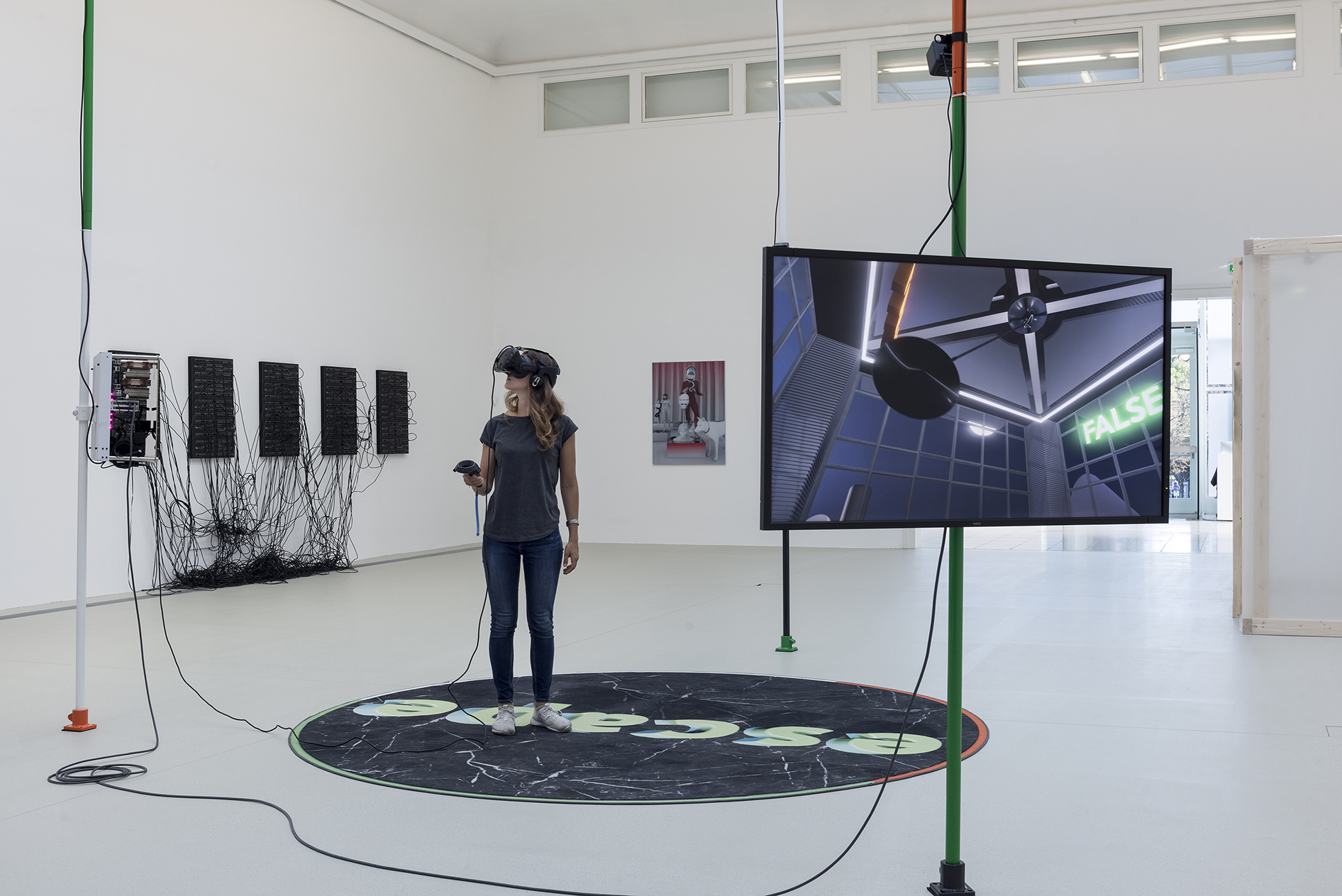Art meets AI:
Twixt tool and being
05/14/2025
9 min reading time
Artificial intelligence is here to stay in our everyday lives, be it as a tool in creative-artistic processes or as a central topic in films and series. But how exactly do artists and filmmakers see it? A trip through art and film history gives some idea…
Lorem Ipsum
Long before the flood of AI-generated images accompanied our everyday lives as a matter of course, in the 1970s, British artist Harold Cohen faced up to the question: “What are the minimum conditions under which a set of marks functions as an image?”. Starting from this question as to what exactly constitutes an image, as of 1972 he compiled his computer program AARON which he continued to work on until his death in 2016. The program was able to independently paint pictures on canvas. Initially more abstract themes, but later figurative painting that Cohen in part then colored until AARON was eventually able to paint in color. While a knowledge of the different styes had to be inputted into the program in program code, it then independently applied the knowledge thus gained.
In 2025, in other words 50 years later, AI’s impact has shifted mainly into the digital space, although its effects are felt ever more in everyday life: AI replaces human programmers, is a medical assistant obsessed with details, handles the bookkeeping, discharges translation duties, and writes term papers. And the art and cultural world is also starting to feel its impact: By means of a simple command you can already create digital images on your smartphone or write pop songs with the right programs you can master music productions or dub the soundtracks for a film in another language. This trend is still relatively new, but film and video art have since the 20th century been busy exploring the potentials of artificial intelligence.


Lorem Ipsum
Another milestone in the narrative on androids, meaning human-like robots with their own element of self-awareness, is doubtless Michael Crichton’s “Westworld” of 1973. There, people can live out their lusts and violent fantasies in futurist theme parks: By day, they can play gunslingers and kill robots who by dint of their programming cannot defend themselves. By night, they enjoy sex with the robots’ female partners, while the broken robots are being repaired in order to suffer the same fate anew the very next day – until a system error drives the androids to rise up in fierce revolt. In 2016, the eponymous TV series came out, whose first season highlighted the many different layers to the complex philosophical issue of gaining self-awareness before losing tis way in subsequent seasons in ever more tedious action plots. Crichton’s movie also wrote history in terms of production technology as it was the first film ever to use digital image processing.

Lorem Ipsum
The question when an AI fundamentally differs from a human and whether they would perhaps act more humanly than their creators is something highlighted in Ridley Scott’s sci-fi classic “Blade Runner” of 1982. The film is loosely based on Philip K. Dick’s 1968 dystopian novel “Do Androids Dream of Electric Sheep?” in which a shabby cop hunts down worker robots who have deserted from their posts and are evidently completely emotional beings. The themes of exploitation and oppression of human-like robots led subsequently to an ecofeminist and Classicism-critical reception of the movie while others analyzed it in terms of themes from the philosophy of religion or for a critique of racism and slavery.



Lorem Ipsum
Other films about AIs set out to explore gender relationships. In Spike Jonze’s “Her” (2013) a man who works as a ghostwriter compiling personal letters for other people but is himself unable to maintain a deeper relationship, falls in love with an intelligent operating system with whom he exclusively communicates verbally. Alex Garland’s “Ex Machina” (2014), by contrast, reads like an allegory on the patriarchy: a female android acts as a complete projection of its sexist inventor and for his sensitive counterpart who seeks to save the AI which he perceives as a virgin in distress. Sandra Wollner’s decidedly disturbing movie “The Trouble with Being Born” (2020) tells the story of a child-like AI whose owners created it in the image of their daughter, who has disappeared. Alongside complex moral issues in our relationship to AI, the film focuses on the emotional world of the android, ergo on the sorrow in knowing that it is a thing and precisely not a human.





Lorem Ipsum
The artist duo Friedemann Banz & Giulia Bowinkel relies on visitors using Virtual Reality goggles in the exhibition spaces to encounter the avatars they have programmed and which present AI-generated thoughts on the world. The duo uses digital worlds and AI alike as tools and as a medium of reflection: In their virtual chamber play “Poly Mesh” (2020), the viewers are the human sand in the ointment who come across an AI whose future forecasts have gone nowhere, but by virtue of the viewers’ presence embarks on a new loop of computations.
In his essayistic book “Der Konjunktiv der Bilder – Meine virtuelle Kamera (K.I.)” (The Conditional Tense of Images – My virtual camera (AI)” that came out last year, German filmmaker and author Alexander Kluge discusses the new type of image that is now possible thanks to text-to-image generators. An essential property of film art, Kluge suggests, is that “the material and the technology behave rebelliously toward all predefined intentions”. The mistakes produced by image-generating AIs, currently still in their infancy, are thus a beneficial element that almost always exclusively have an “inner reason”. The order of the day must therefore be to always utilize the advantages of technology until these errors are completely eradicated and all that remains is a mediocre world of images. As a digital appendix, the QR codes in the book take you to short films available for streaming online that present Alexander Kluge’s worlds of images produced using AI.

Lorem Ipsum
In the context of what US-Turkish media artist Refik Anadol terms a veritable “human-machine collaboration”, for several years now he has created huge installations that he terms “AI data painting”. To this end, an AI is fed with thousands upon thousands of Terrabytes of publicly available photos and then independently creates from these data fluid animations that are projected onto a huge screen. While the installations produced in this way show impressive worlds of colors, one cannot discern any processing AI consciousness which according to the artist is busy dreaming. In his piece “Dvořák Dreams” (2023), the AI was fed with countless photos of Czech composer Antonín Dvořák and likewise with audio recordings of his compositions. In terms of images and sounds, the result is a huge, billowing entity that is not a creature in itself, only a form devoid of content.
This is perhaps quite logical that in a world filled with increasingly almost content-free images of yearning, such as artist collective Troika recently presented in their video piece “Buenavista” (2025) at SCHIRN. In the middle of it all a hairy robot that in the face of the countless artificially generated landscapes surrounding it, seems to become ever more restless only swiftly to squirm in exhausted ecstasy.
